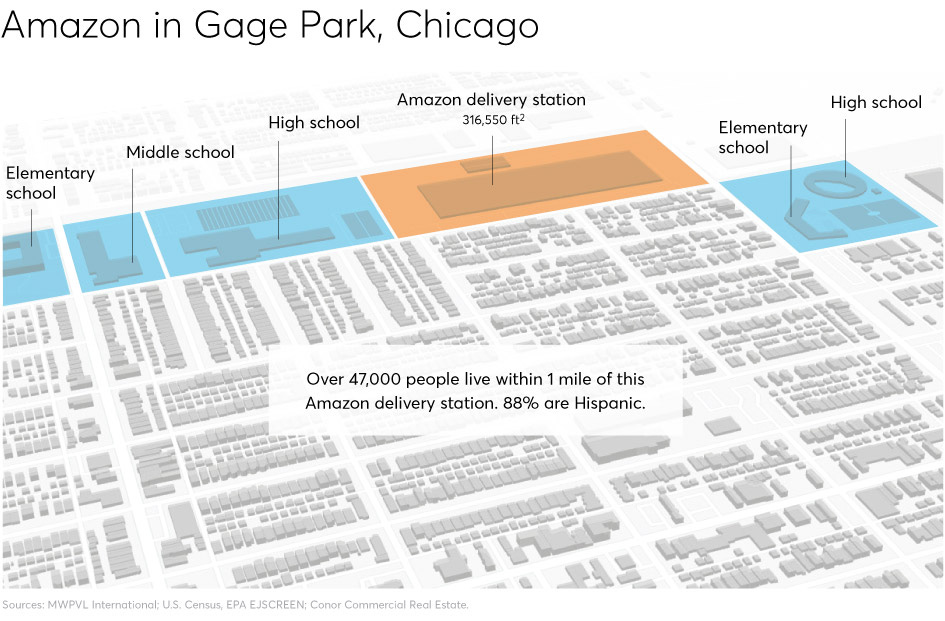Consumer Reports exposes Amazon's warehouse racism.
We have had a subscription to Consumer Reports for years.
Just recently we used it to research replacing the dishwasher we’ve had for twenty years.
We are at the stage in our lives when we are replacing stuff.
We’re getting older and stuff doesn’t last as long. Our stove is 30 years old and although the oven bakes a little unevenly, it otherwise works fine. But we had to replace the refrigerator not that long ago.
It was a bit of a surprise then that the latest Consumer Reports had nothing to do with toasters or coffee makers.
Chicago’s north side residential streets see plenty of those grey package delivery vans with the blue smiling arrow but never Amazon’s giant sixteen wheelers.
For residents of Gage Park on Chicago’s south side it is a different matter.
A three hundred thousand square foot Amazon distribution center is located there, right next to five public schools.
Residential streets in Gage Park are clogged with heavy duty trucks. The air is full of choking truck emissions. The neighborhood’s children suffer from higher than normal cases of asthma.
Kudos to investigative reporter Kaveh Waddell, who wrote the study and is an investigative journalist at CR's Digital Lab, covering algorithmic bias, misinformation, and technology-enabled abuses of power. He’s reported for Axios and The Atlantic, and as a freelancer in Beirut.
CR and The Guardian focused their research on Chicago and the area known as California’s "Inland Empire” east of Los Angeles.
Their conclusions are clear.
Amazon opens most of its warehouses in neighborhoods with a disproportionately high number of people of color. Nationally, 69 percent of Amazon warehouses have a greater share of people of color living within a mile radius than the median, or typical, neighborhood in their metro areas. Some of these are communities where other industrial facilities already cause residents to worry about poor air quality, and excessive noise and traffic.
The neighborhoods tend to be poorer, too. Fifty-seven percent of Amazon warehouses are in neighborhoods with a greater share of low-income residents than typical for the metro area they’re in.
It’s just the opposite for Whole Foods and other Amazon retail stores. These tend to be located in a city’s wealthier, whiter neighborhoods, away from the communities where Amazon runs its warehouses.
Warehouse operators are not generally accountable for air pollution from the trucks and vans they attract, and existing air quality monitoring networks are too spread out to pick up local emissions that can affect neighbors’ health.
Community activists are asking local, state, and federal officials to step in to regulate pollution from warehouse-related traffic, and to consider an area’s existing environmental hazards before allowing new warehouses to open there.
Both The Guardian article and the Consumer Reports study are not to be missed.





